Huarui Yin
Finite-Precision Arithmetic Transceiver for Massive MIMO Systems
Feb 03, 2024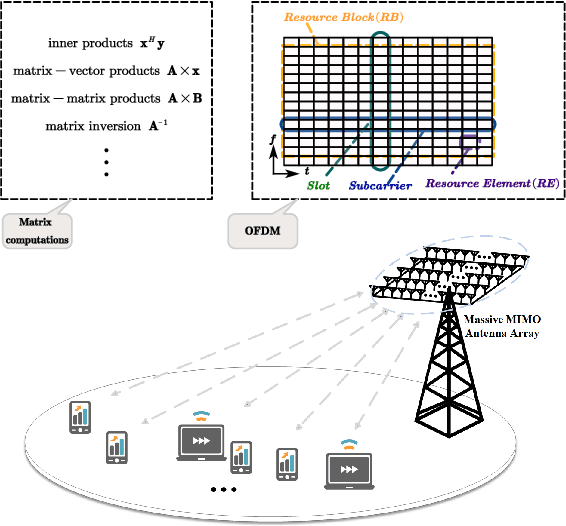
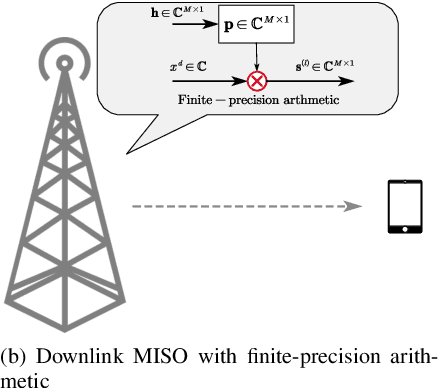

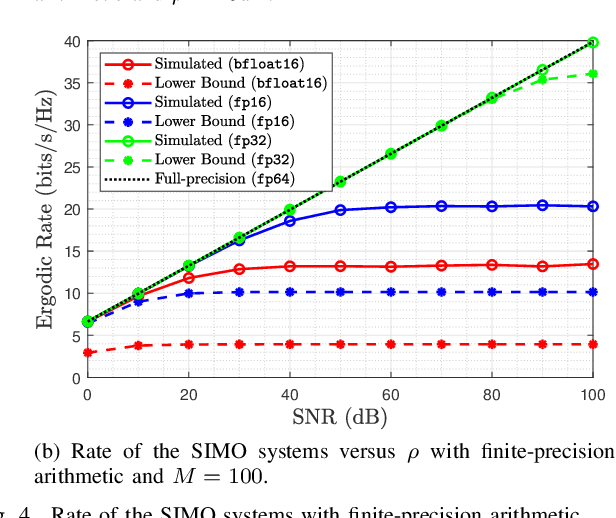
Abstract:Efficient implementation of massive multiple-input-multiple-output (MIMO) transceivers is essential for the next-generation wireless networks. To reduce the high computational complexity of the massive MIMO transceiver, in this paper, we propose a new massive MIMO architecture using finite-precision arithmetic. First, we conduct the rounding error analysis and derive the lower bound of the achievable rate for single-input-multiple-output (SIMO) using maximal ratio combining (MRC) and multiple-input-single-output (MISO) systems using maximal ratio transmission (MRT) with finite-precision arithmetic. Then, considering the multi-user scenario, the rounding error analysis of zero-forcing (ZF) detection and precoding is derived by using the normal equations (NE) method. The corresponding lower bounds of the achievable sum rate are also derived and asymptotic analyses are presented. Built upon insights from these analyses and lower bounds, we propose a mixed-precision architecture for massive MIMO systems to offset performance gaps due to finite-precision arithmetic. The corresponding analysis of rounding errors and computational costs is obtained. Simulation results validate the derived bounds and underscore the superiority of the proposed mixed-precision architecture to the conventional structure.
Joint Channel Estimation and Data Recovery for Millimeter Massive MIMO: Using Pilot to Capture Principal Components
Jan 03, 2024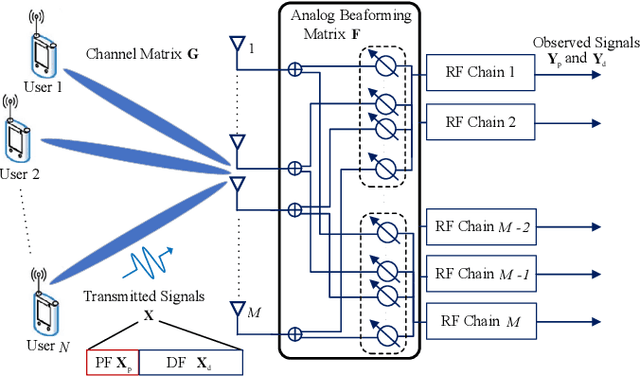
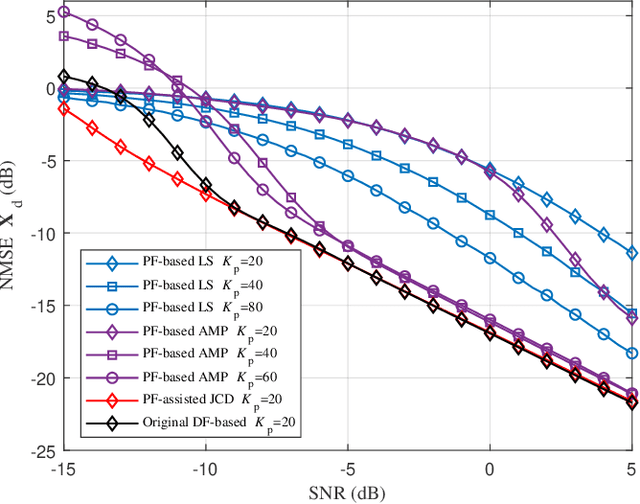
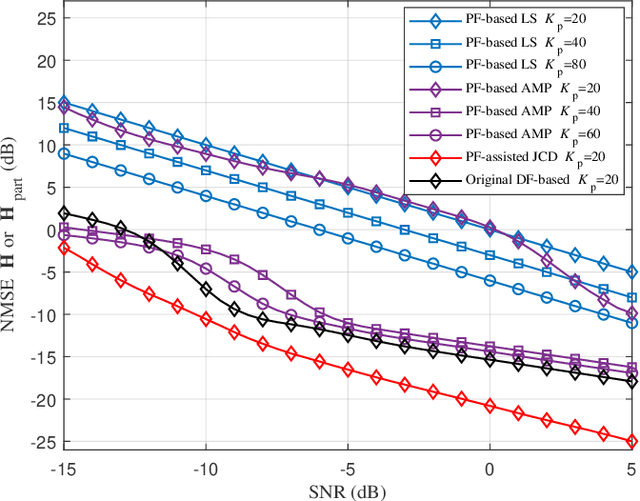
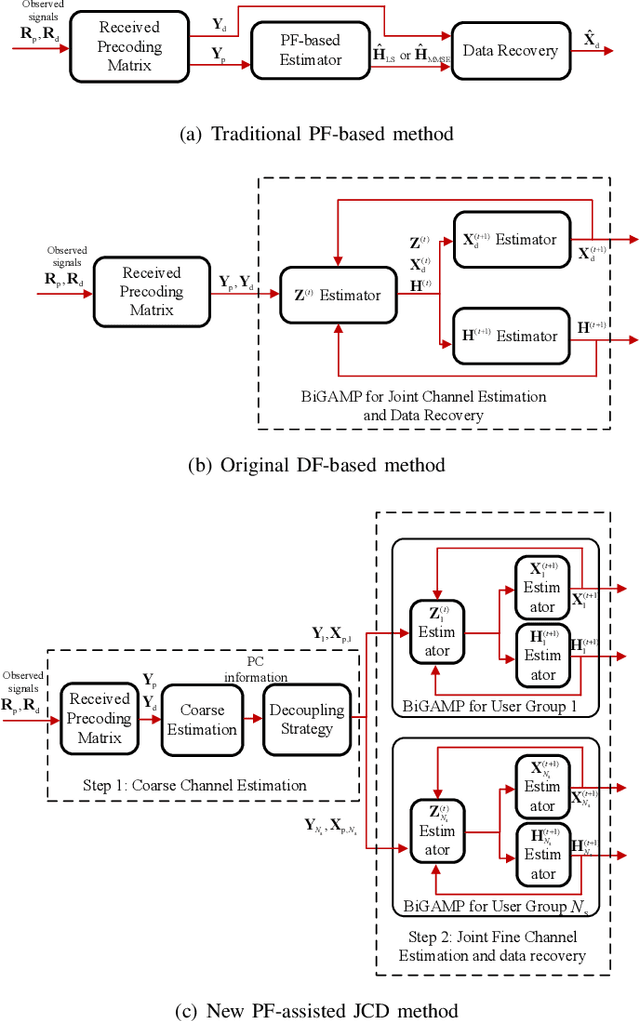
Abstract:Channel state information (CSI) is important to reap the full benefits of millimeter wave (mmWave) massive multiple-input multiple-output (MIMO) systems. The traditional channel estimation methods using pilot frames (PF) lead to excessive overhead. To reduce the demand for PF, data frames (DF) can be adopted for joint channel estimation and data recovery. However, the computational complexity of the DF-based methods is prohibitively high. To reduce the computational complexity, we propose a joint channel estimation and data recovery (JCD) method assisted by a small number of PF for mmWave massive MIMO systems. The proposed method has two stages. In Stage 1, differing from the traditional PF-based methods, the proposed PF-assisted method is utilized to capture the angle of arrival (AoA) of principal components (PC) of channels. In Stage 2, JCD is designed for parallel implementation based on the multi-user decoupling strategy. The theoretical analysis demonstrates that the PF-assisted JCD method can achieve equivalent performance to the Bayesian-optimal DF-based method, while greatly reducing the computational complexity. Simulation results are also presented to validate the analytical results.
Coexistence of Pulsed Radar and Communications: Interference Suppression and Multi-path Combining
Sep 06, 2022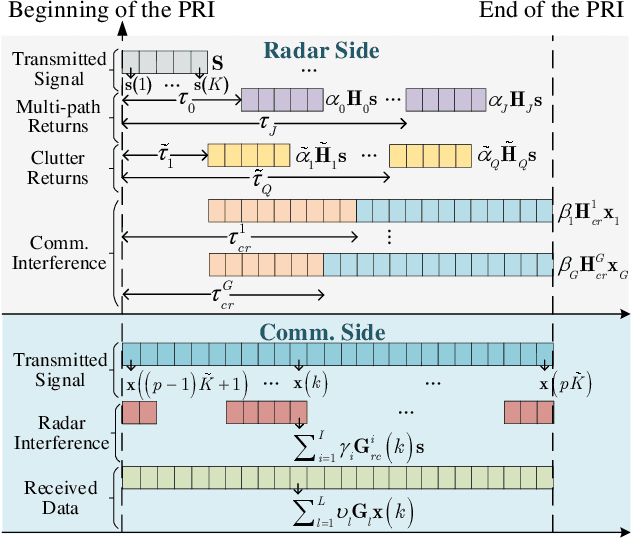
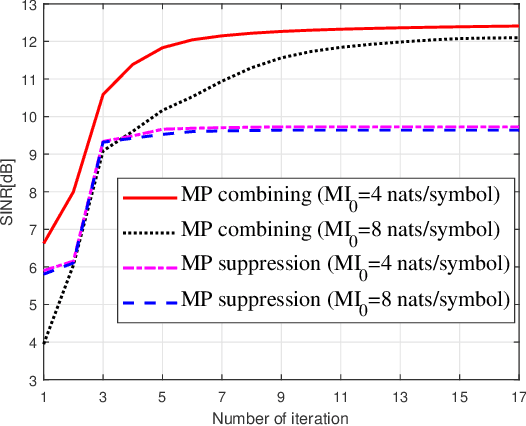
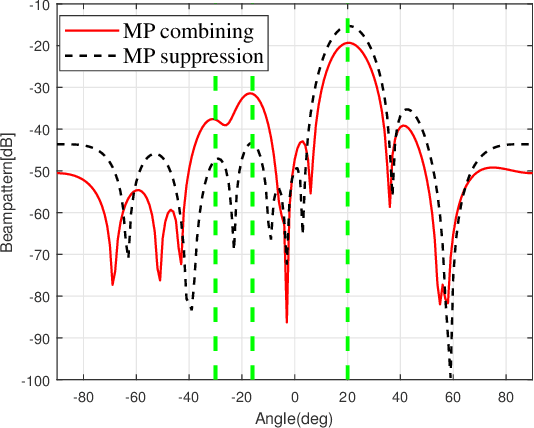
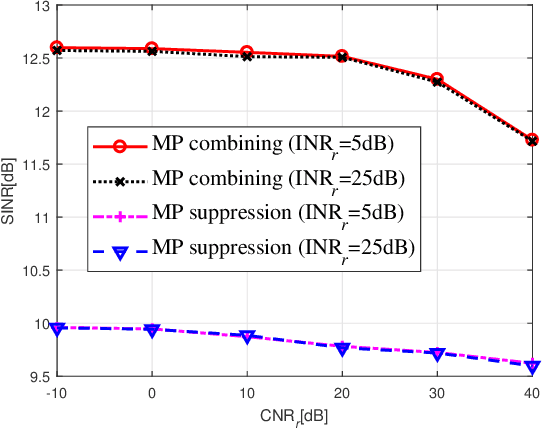
Abstract:The focus of this study is on the spectrum sharing between multiple-input multiple-output (MIMO) communications and co-located pulsed MIMO radar systems in multi-path environments. The major challenge is to suppress the mutual interference between the two systems while combining the useful multi-path components received at each system. We tackle this challenge by jointly designing the communication precoder, radar transmit waveform and receive filter. Specifically, the signal-to-interference-plus-noise ratio (SINR) at the radar receiver is maximized subject to constraints on the radar waveform, communication rate and transmit power. The multi-path propagation complicates the expressions of the radar SINR and communication rate, leading to a non-convex problem. To solve it, a sub-optimal algorithm based on the alternating maximization is used to optimize the precoder, radar transmit waveform and receive filter iteratively. The radar receive filter can be updated by a closed-form solution. The communication precoder and radar transmit waveform can be obtained by the successive convex approximation and alternating direction method of multipliers. Simulation results are provided to demonstrate the effectiveness of the proposed design.
 Add to Chrome
Add to Chrome Add to Firefox
Add to Firefox Add to Edge
Add to Edge